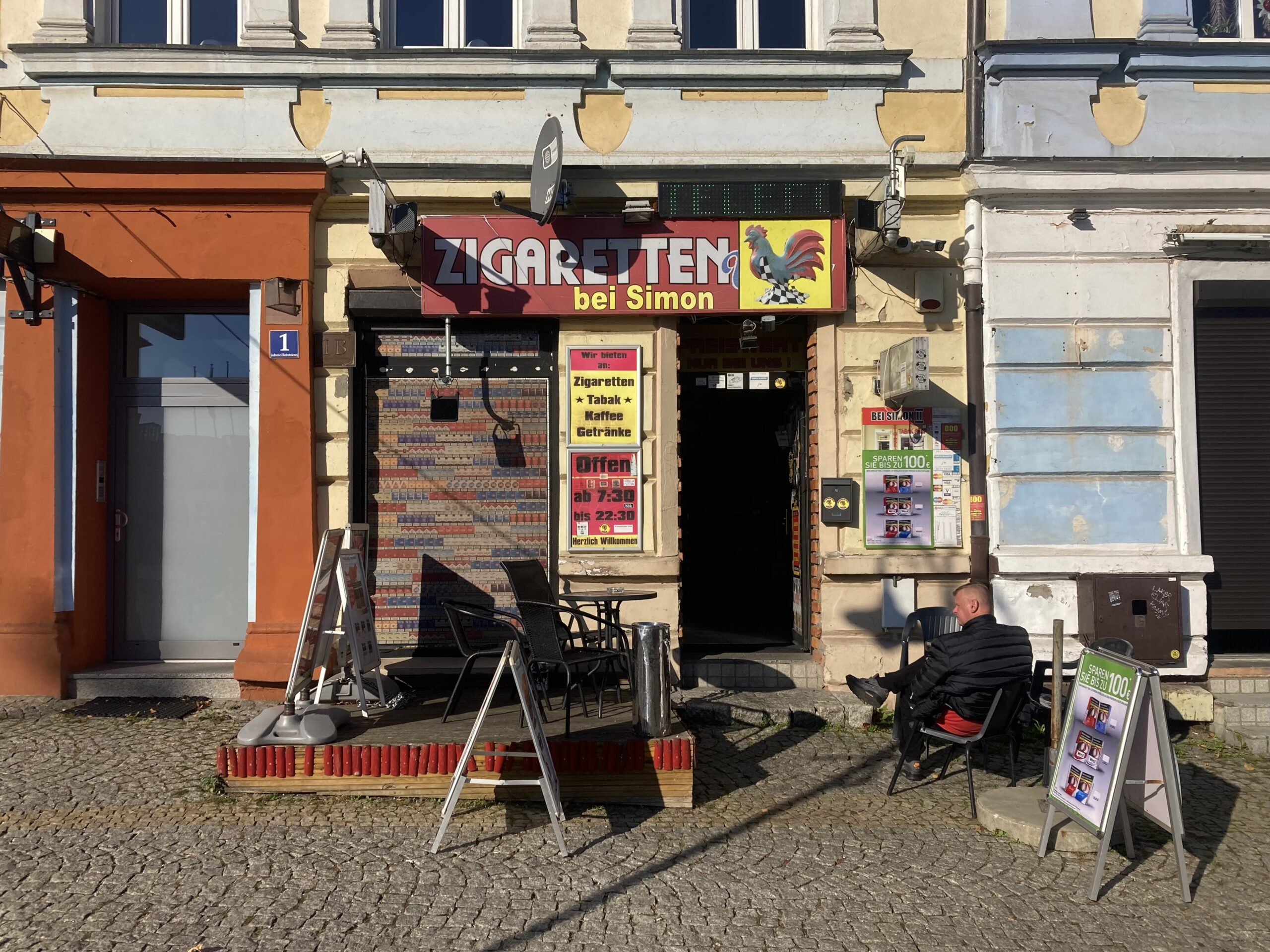Although the Oder and the bridge constitute the border between the twin cities, the spaces around them function as urban centers. In Słubice, most social and commercial activity gravitates toward Germany, reflecting how the spatial structure of the city is shaped by the relatively new border dynamics. The promenade, lined with currency exchange shops and stores selling cigarettes to Germans, isn’t designed for locals but for cross-border visitors seeking cheaper goods. These dynamics can also be discerned in the sonic qualities of the place:
Instead of the hustle and bustle expected of a street in a traditional European city center, animated by conversations and spontaneous encounters (Lefebvre, 2003), the soundscape of the promenade in Słubice is dominated by the muffled noise of vehicles crossing the bridge, fading at a certain point only to re-emerge as one reaches the end of the promenade, marked by another road. In the middle of the promenade, a small fountain and a few passers-by disturb the stillness of the otherwise relatively quiet environment. As primary customers of these shops and restaurants are German, the center of the Polish town becomes defined by the convenience of reaching it by the neighbors from across the border. The opening of the border thus fostered spatial dynamics in which the city center is simultaneously a space of transition, with its soundscape defined by mobility.


